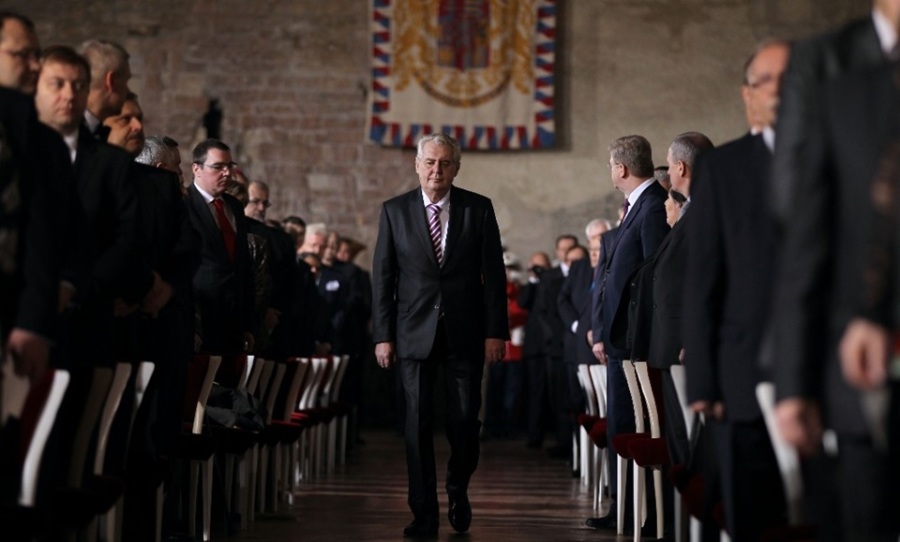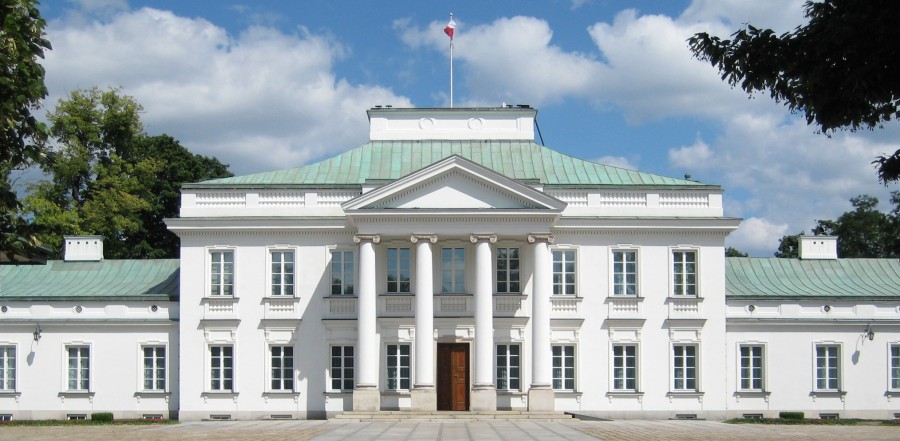This post summarises the PhD thesis of Dr Philipp Köker, Senior Research Fellow in Politics and International Relations at Canterbury Christ Church University, which recently won the prestigious ECPR Jean Blondel Prize 2016 for the best thesis in Politics. Read the press release or download the full study here.
The presidents of the new democracies that emerged in Central and Eastern Europe (CEE) after 1989 have been subject to a great number of studies. Thereby, political scientists have often focused on presidents’ powers – be it to enhance or develop classifications of regime types, or to study their impact on democratic consolidation or economic development. However, comparatively little has so far been written on how president actually use the varying powers at their disposal. Therefore, the aim of my study was to map patterns of presidential activism – defined as the discretionary use of formal powers by the president – and explain why and when presidents decide to become active.
Until now, there have only been few attempts to explain the use of presidential powers in the context of European parliamentary and semi-presidential systems. One of the most useful in this regard is Margit Tavits’ (2008) ‘political opportunity framework’ which I also adapted for my study. Based on studies of intra-executive conflict Tavits argues that variations in environmental factors – the relative ‘strength of other political institutions and the constellation of political forces in parliament and government’ (ibid. 35) – determine the level of consensus between the president and other institutions and thereby create opportunities for activism. In contrast to Tavits, however, I argue that these factors do not eclipse the role of the mode of presidential election. Rather, in line with the traditional argument I asserted that popularly elected presidents should be more active than their indirectly elected counterparts. This is because they are agents of the public rather than parliament and lack the constraints and potential for punishment faced by presidents elected in parliament (for more detail, see pp.41-46 and pp.68-69 of my thesis). My main hypotheses were therefore:
- Directly elected presidents are more active than indirectly elected presidents.
- Presidents are most active during cohabitation, least often when relations with the government are unified.
- Presidents are more active when parliamentary fragmentation is high.
- Presidents are more active when the government’s seat share is small.
- Presidents are more active if their party’s seat share in the assembly is small (or if they have no parliamentary support base).
It is clear that research design, case selection, and the quality of data matters greatly in arriving at meaningful and reliable conclusions. In order to both achieve generalisable results and gain in-depth insights into the practice of presidential activism, I employed a nested analysis framework which combined large-N statistical analyses with qualitative case studies. The presidencies of CEE presented a particularly suitable set of cases for this type of comparative analysis for several reasons [2]. First, the regions boasts a mix of directly and indirectly elected presidents with varying degrees of power. Second, the new democracies in CEE were not only created during the same and comparatively short period of time, but also faced analogous domestic and external pressures during democratic transition. Last, as previous studies usually had to rely on proxies to measure presidential activism, I created an original cross-section time-series data set on the use of presidents’ legislative powers – vetoes, judicial review requests, and legislative initiatives – in CEE between 1990 and 2010 for my statistical analysis. For my case studies, I conducted 65 semi-structured interviews with high-ranking presidential advisors, (former) government members and MPs, and a number of national experts.
Patterns of presidential activism
In order to analyse my data on presidential activism, I used both negative binomial and event history regression models. For the sake of simplicity I only show some descriptive statistics on the use of presidential vetoes here. My regression models generally confirmed the majority of my hypotheses, particularly with regard to presidential vetoes – the most prominent and most frequently used presidential power. In line with the table below, my model results showed that presidents used their veto power significantly more often than indirectly elected presidents. Furthermore, presidents were more active during neutral relations with the government and cohabitation and the effects of the governmental and presidential seat shares, too, showed the expected effects. Echoing findings from the study of presidential veto use in the United States, president also vetoed more frequently the more bills were passed by parliament. Contrary to my expectations, however, coefficients for parliamentary fragmentation did not reach statistical significance.

The statistical analyses of presidents’ use of judicial review requests and legislative initiatives unfortunately brought less striking results. This can mostly be attributed to the fact that they are only relatively rarely used or only few presidents have the right to use them which complicated statistical modelling. Nonetheless, the results for presidential vetoes provided a sufficient basis for proceeding with so-called ‘model-testing small-N analysis’ – a second step in the nested analysis approach that is aimed at verifying the results of the quantitative analysis, further testing the robustness of the model, and illustrating the causal mechanisms at work.
Presidential activism in practice
Based on the predictions of the statistical models of presidential vetoes, I selected 12 president-cabinet pairings in four countries (Estonia, Hungary, Poland and Slovakia) for qualitative analysis. The guiding principle of the selection of countries (two directly, two indirectly elected presidents; two powerful, two weak presidents) as well as the the selection of president-cabinet pairings was to achieve a well-balanced mix of cases for in-depth analysis. Due to the results of the statistical models, the case studies focussed on presidential vetoes and the degree to which the factors included in my statistical models could explain instances (or the lack) of the use of vetoes. They also included a section on presidential activism in government formation which – given the lack of appropriate data – could not be adequately analysed statistically and was intentionally left for the qualitative part.
The in-depth analysis of presidential activism, which was greatly facilitated by the insights gained through interviews with those involved, generally confirmed my hypotheses and provided strong evidence that the hypothesised mechanisms actually insist. In particular, the mode of presidential election emerged as one of, if not the most important factor in explaining presidential activism. The popular mandate gained through direct elections gave presidents significantly more freedom in their actions but also required them to be more active to ensure their re-election – this was not only confirmed through my interviews with presidential aides but also evidenced by a number of presidents’ public statements. Indirectly elected presidents on the other hand acknowledged their dependence on parliament and therefore used their powers less often as not to interfere in the work of their principal. The relationship between president and government as well as the government’s strength in parliament were equally shown to be key determinants in presidents’ decisions to use their powers. Yet the qualitative also demonstrated that the size of presidents’ support base in parliament only becomes relevant when their party participates in government or when high thresholds are needed to override a veto. In addition, the qualitative analysis suggested an additional explanatory factor for presidential activism not included in my theoretical and statistical models – divisions within and between government parties provided additional opportunities for activism and could explain vetoes under otherwise unfavourable conditions. Last, my (albeit brief) analysis of presidential activism in government formation, censure and dismissal called for re-thinking the use of non-partisan cabinet ministers as a proxy for presidential involvement. Not only were non-partisans often appointed without presidential involvement but presidents were also very actively involved in placing co-partisans in the cabinet.

Conclusion & look ahead
Comparative work on the actual use of presidential powers – particularly in European political systems – is still rare. My study could provide one of the first large-scale studies of presidential activism in these systems and thereby confirm a number of assumption which could previously only insufficiently be tested. The nested analysis approach furthermore ensured a better understanding of both statistical results and qualitative findings which will help to inform future studies and further theory development. My study however only produced limited evidence on the influence of factors related to presidents as individual (‘president-centred’ factors) – a group of factors particularly prominent in the case study literature on European presidents. While it appeared that these variables certainly have the potential to enhance the understanding and explanation of presidential activism, more research based on strong theory is needed to further examine their effect. In addition, it would seem sensible to analyse the use of presidential vetoes using data on individual bills which would allow to take those factors that could not be adequately addressed in the statistical models used in this study into account.
__________________________________________________________
References:
Tavits, Margit. 2008. Presidents with Prime Ministers: Do direct elections matter?. Oxford/New York: Oxford University Press.
Notes:
[1] A previous version of post first appeared on presidential-power.com on 15 April 2015.
[2] I defined CEE as those countries that joined the EU in 2004/2007, i.e. Bulgaria, Czech Republic, Estonia, Hungary, Latvia, Lithuania, Poland, Romania, Slovakia and Slovenia. Due to the fact that the Slovenian presidency does not possess any legislative powers, it was excluded from this study.
 Politics
Politics Anna Vanaga
Anna Vanaga 845
845


